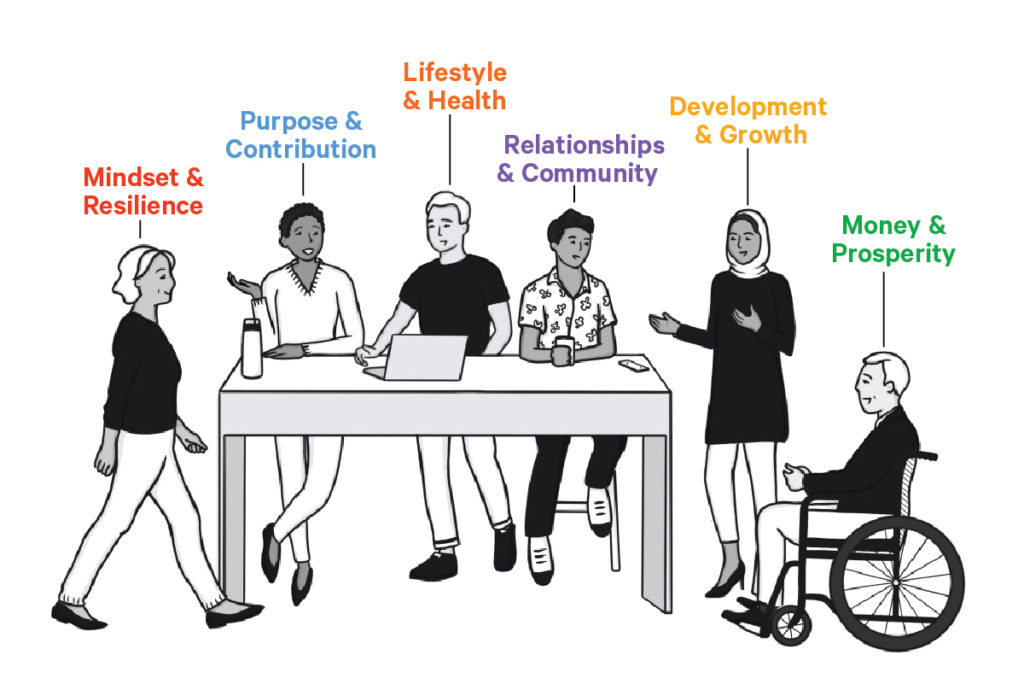What Keeps Employees Engaged in Workplace Well-being?
Well-being programs are a part of nearly every large company’s offerings. In fact, half of employers with at least 50 employees and more than 90 percent of those with more than 50,000 employees had a wellness program, according to the RAND Workplace Wellness Programs Study.
Interestingly, despite the high adoption rate of well-being programs at larger companies, the participation rate for eligible employees and their dependents was lacking.
Based on RAND’s analysis of the larger employers, participation rates were at a median of 40 percent. But they also found certain actions that companies could take to significantly improve those rates.
In this post, we share some of those ways, including ones we’ve found to be successful.
Demonstrate that you prioritize well-being at every level of your organization.
Your leaders have to show that they truly value their own well-being at work — as well as that of other people — before they can expect to gain employee buy-in. It starts with leadership. Identify executives who champion for workplace well-being, not because they’re asked to, but because they live it every day.
Maybe your CEO disconnects with technology every Sunday, as a way to take a mental health break. This might inspire an idea for a challenge as part of your workplace well-being program. You could suggest that employees disconnect from technology up to an hour before bedtime. To support this, that also means that managers should stop sending emails late at night. Instead, encourage them to write out the message and then schedule it to go out the next business day.
To launch the challenge, you could have your CEO create a short video talking about how always being connected to technology has actually made them feel less connected to the people around them. Have them focus on all the things they were able to enjoy and notice once they put the phone down. They could also talk about how it enabled them to return to work with a clearer mind and a refilled cup.
Make sure well-being initiatives are part of the everyday conversation – not just a monthly email.
Only 60 percent of U.S. employees are aware that their company offers a well-being program, according to Gallup. It’s awfully hard to participate in a program you’ve never heard about in the first place. Sometimes, the lack of awareness isn’t indicative of lack of effort to spread the word. You might be sending out regular emails about your workplace well-being initiatives that just aren’t getting read. In fact, an Adobe survey found that people spend an average of five or more hours per day checking email. So it’s no surprise if yours inadvertently falls through the cracks if it’s not directly related to company business.
That’s why it’s important to have a communication strategy that doesn’t solely rely on email for participation. Consider posting flyers in common areas around the office and posting announcements on screen savers in the conference rooms.
Additionally, ask executives to champion for upcoming well-being initiatives during companywide town hall meetings. You could also give managers talking points to cover during weekly departments meetings. Make your well-being program part of the daily conversation — not just another email your employees have to read.
Empower employees to decide what they want to work on.
Physical health is just one aspect of who we are as a person. Your well-being program should take a whole-person approach, rather than just honing in on diet, exercise or smoking cessation.
At Aduro, we help employees unlock their true potential by letting them decide what they want to be great at. It’s called “Human Performance,” and it’s comprised of six interconnected aspects of our lives, including:
- Lifestyle & Health – The ability to make better day-to-day decisions by understanding how they connect to future outcomes.
- Mindset & Resilience – Recognizing your own “default” settings, in order to better respond to adversity.
- Money & Prosperity – Understanding your relationship with money and how you can move from meeting basic needs to leading a fulfilling, secure life.
- Development & Growth – Personal and professional development creates a cycle of growth and mentorship.
- Relationships & Community – Learning how our connections can help to build and strengthen our sense of belonging and community.
- Purpose & Contribution – When people have a clear purpose, they’re able to show up fully.

Learn more about the six interconnected aspects of life on our solutions page.
Allowing your employees to decide what they want to work on is one of the most empowering ways to encourage engagement. When we choose the destination, we’re more invested in reaching it.
Additionally, the RAND study found that companies with comprehensive well-being programs saw the highest participation rate.
Make it worth their while.
Feeling good from the inside out is a reward in and of itself. However, it is a process to make small changes to our own daily habits. Rewards can help provide external motivation to get the ball rolling.
There’s also data to back this up. The same RAND study showed that employers that used rewards saw higher participation rates compared to no rewards. Monetary and non-monetary incentives both appeared to increase interest.
As an example, you might offer a monetary incentive for completing an annual health survey or biometric screening. Throughout the year, you might also offer fun, non-monetary incentives. If one of your executives is a big 49ers fan, she could wear a Seahawks jersey to work one day if your company reaches a certain amount of participation in the 401(k) program. At the same time your employees are being encouraged to invest in their future, they’ll also be receiving the more immediate reward of watching Diane wear their favorite team’s colors. The most important part of incentives is knowing your audience and choosing something that will be truly motivating for them individually and collectively.

